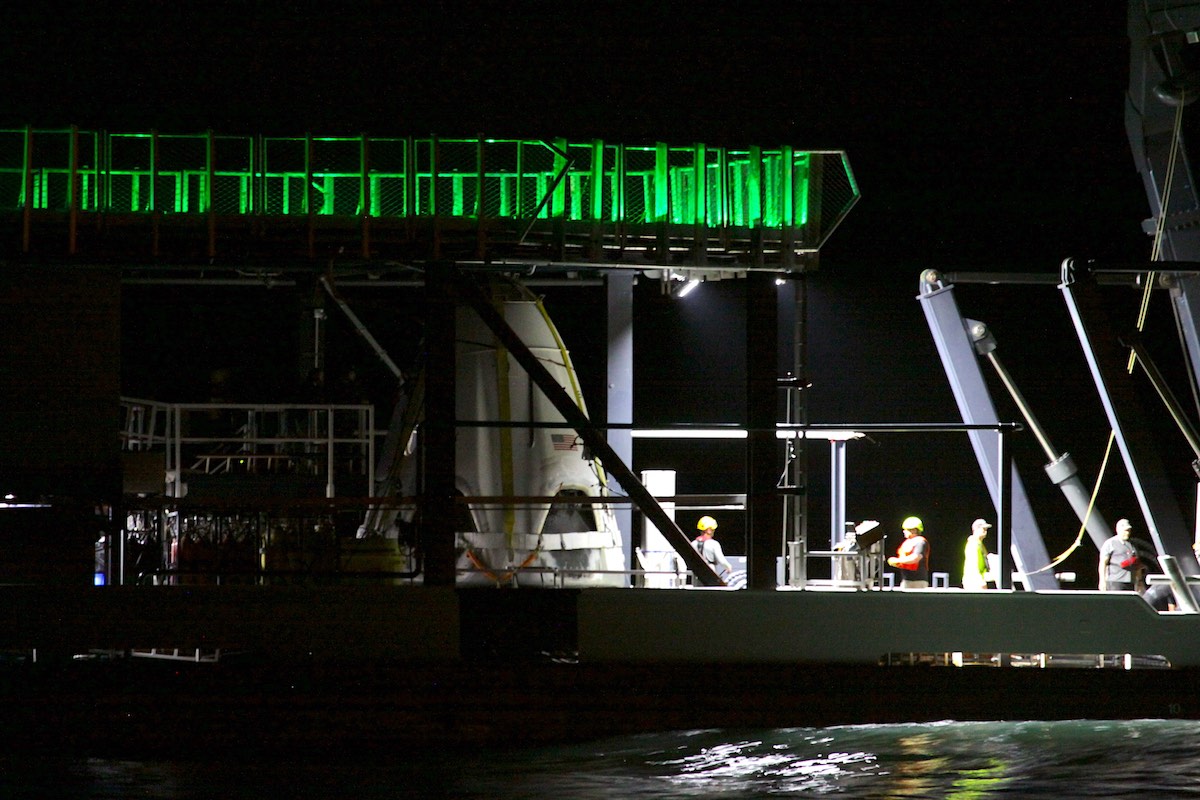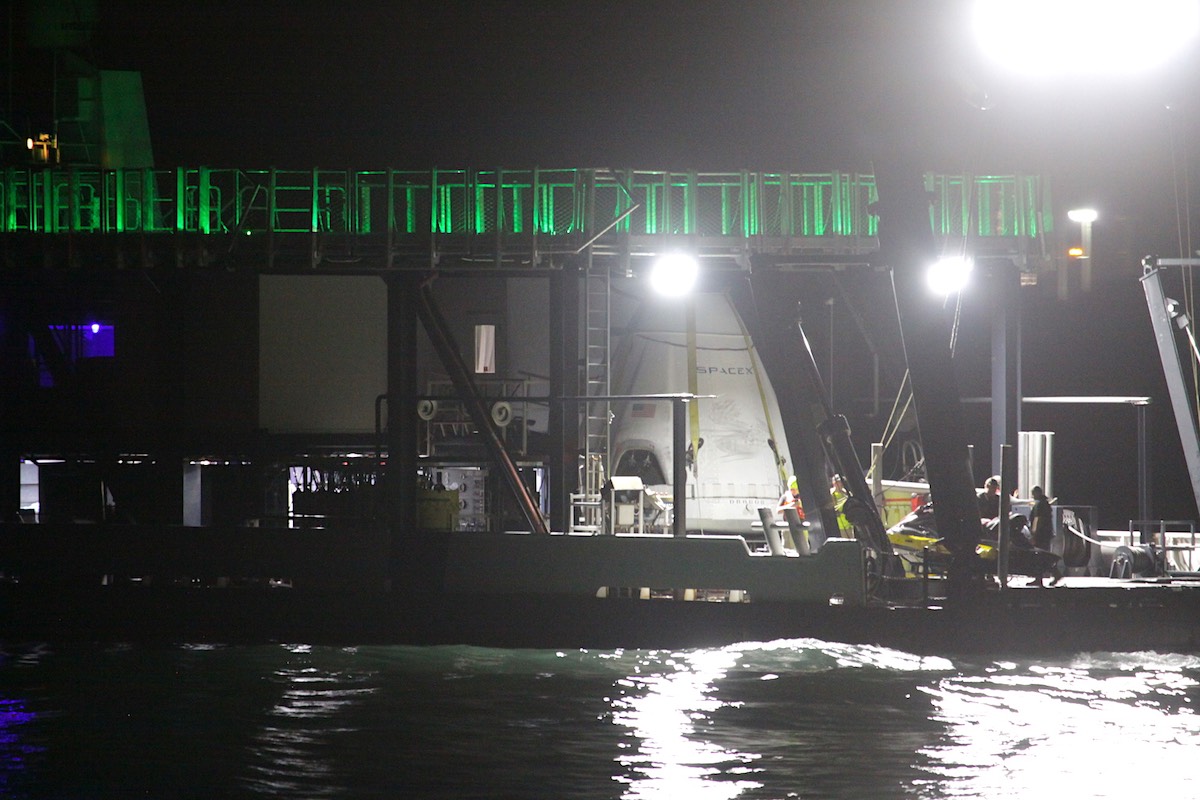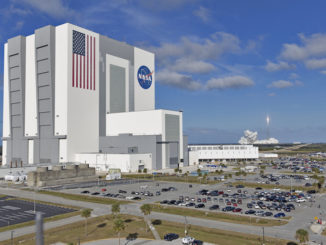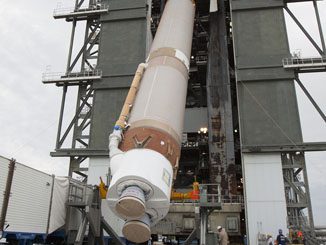
Loaded onto a SpaceX recovery ship, the Crew Dragon capsule that performed a successful in-flight abort test Sunday over Florida’s Space Coast pulled into Port Canaveral hours later after being retrieved from the Atlantic Ocean.
The 13-foot-diameter (4-meter) crew capsule splashed down under four main parachutes in the Atlantic Ocean roughly 20 miles (32 kilometers) east of the Kennedy Space Center around nine minutes after liftoff on top of a Falcon 9 rocket, which occurred at 10:30 a.m. EST (1530 GMT) Sunday.
SpaceX’s Crew Dragon recovery vessel, named “Go Searcher,” hoisted the capsule out of the Atlantic and secured it on a fixture for the trip back to Port Canaveral.
The vessel arrived at the port shortly before 7 p.m. EST Sunday (0000 GMT Monday), around less than nine hours after launch and splashdown. Go Searcher carried the capsule to the U.S. Navy’s Trident Turning Basin for offloading.
A short time later, a second recovery vessel arrived at Port Canaveral carrying the Dragon’s intact trunk, which jettisoned as part of the in-flight abort test and fell to the sea. On an orbital mission, the trunk burns up during re-entry and is not recovered.
Go Searcher is equipped with a helipad, a medical facility for astronauts and a sling to raise Crew Dragon capsules from the ocean. After a normal splashdown on a crew mission just off Florida’s Space Coast,, the capsule will be raised onto the ship’s deck and the astronauts will be helped out of the spacecraft and moved to the on-board medical facility for exams on the way back to Port Canaveral.
Read our full story on the Crew Dragon abort test for details on the mission.
Additional imagery of the Crew Dragon’s arrival at Port Canaveral is posted below.

SpaceX’s Crew Dragon spacecraft has arrived at Port Canaveral for inspections and analysis after today’s successful abort test over Florida’s Space Coast. https://t.co/aocyihhVRd pic.twitter.com/P97O5YknXc
— Spaceflight Now (@SpaceflightNow) January 19, 2020
Email the author.
Follow Stephen Clark on Twitter: @StephenClark1.



